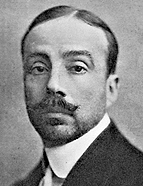

As for the general methodological aspects of his work, we can see his attachment to a modus operandi based on intuition (a quality he considered essential for an art historian) and marked by a distrust of documentary resources as privileged sources for historiography. This empirical attitude, which brought him closer to the activity of the connoisseur and the attributionist currents, was based on the assumptions that the main document for the study of works of art and their history should always be the object itself, and its individual formal characteristics could only be analysed effectively — via comparisons, groupings, etc. — by a sensitive historian with a vast artistic culture. Only after this preliminary empirical and intuitive study should the results be compared with existing information in primary and secondary documentary sources, which would confirm or refute the first conclusions. This method earned José de Figueiredo accusations of often manipulating his studies in order to obtain pre-determined results. These criticisms were not only levelled at him by his detractors but also by figures close to him, such as Joaquim de Vasconcelos.
Another characteristic of his activity was his continuous need for internationalisation, linked not only to the desire to promote his individual work as a historian and director of the MNAA but also to a broader objective of giving the history of Portuguese art a prominent place in the context of the history of Western art. This internationalisation was very successful and was achieved through the publication of articles written by himself or referring to his work in foreign journals, his participation in conferences and the organisation of international exhibitions of Portuguese art. We must highlight his participation in the International Congresses of Art History (Paris, 1921; Brussels, 1930; Stockholm, 1933; and Berne, 1936), an opportunity to promote to foreign peers the studies he and other researchers, such as Luís Keil, Reinaldo dos Santos, João Barreira or Vergílio Correia, had been carrying out; and the major exhibitions of Portuguese art that he curated in Seville (1929) and Paris (1931), with the collaboration of André Dézarrois and Adriano de Sousa Lopes), which were shows of great public visibility and made works such as the St. Vicent Panels, the Custody of Belém or the Pastrana Tapestries known to a wider audience. Despite some controversy and criticism, their purpose was fulfilled: these events did indeed stimulate interest in ancient Portuguese art, which was reflected in the growing number of visits by foreign groups to the MNAA and more dynamic interrelationships between the museum and other European institutions.
This work is financed by national funds through FCT - Foundation for Science and Technology, I.P, in the scope of the projects UIDB/04311/2020 and UIDP/04311/2020.
